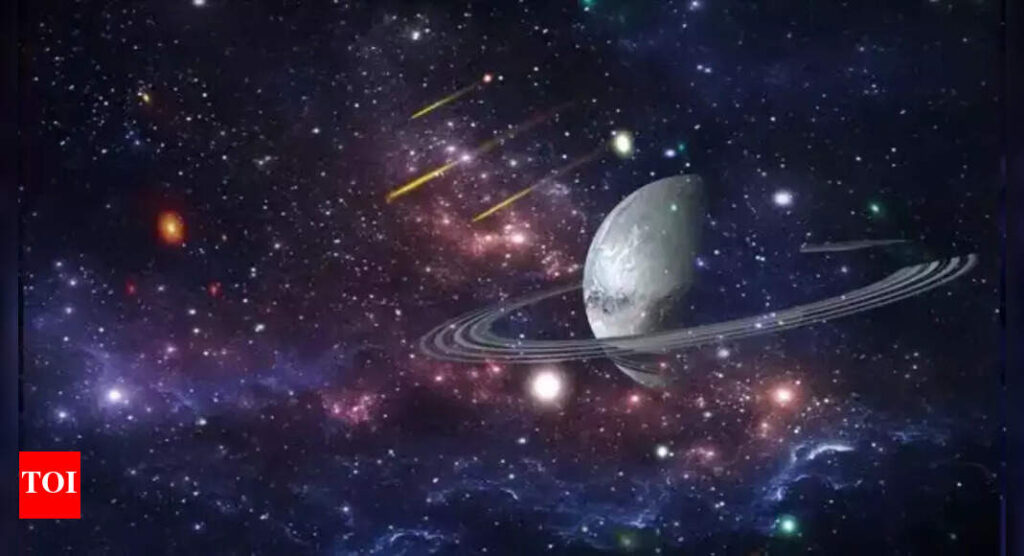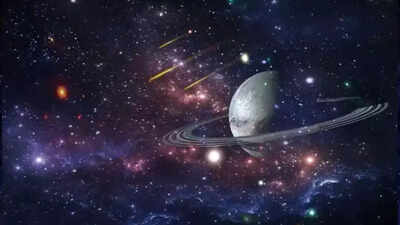Summer 2025 will be a celestial delight for amateur astronomers and stargazers alike. From dazzling meteor showers and glowing full moons to planetary alignments and rare eclipses, the night sky will offer an unforgettable series of astronomical events. Highlights include the breathtaking Perseid Meteor Shower, a dramatic total lunar eclipse, and the Autumnal Equinox, each providing unique opportunities to connect with the cosmos. As these events approach, timing and visibility are crucial. Knowing when and where to look will ensure you don’t miss these awe-inspiring moments that illuminate the beauty and rhythm of our universe. For all the stargazers, check below the list of astronomical events this summer 2025 you surely can’t miss.
List of astronomical events 2025
Top celestial events this summer
June 11, 2025: Full Strawberry Moon
The Full Strawberry Moon is in June and is the final of the year’s supermoons. The full moon is also known as the time of strawberry harvest in the Northern Hemisphere and thus the name. The moon itself, at times, reddens, but that is not the usual form it takes. Indigenous cultures have labeled the name “Strawberry Moon” to signify the time of the year when the berry crop is in full swing, and that is a cue about the time. The June full moon of June 11, 2025, will be in view in all its glory, offering perfect timing for moon watchers to observe this stunning space phenomenon.
June 21, 2025: June Solstice
June Solstice is the time when the Sun passes its most northern point in the sky, beginning summer in the Northern Hemisphere. It is the longest day of the year with the most daylight. In the Southern Hemisphere, it will mark the beginning of winter, the shortest day of the year. The Solstice falls on 02:42 UTC June 21, 2025. It is a time of greater hours of daylight across the Northern Hemisphere. It is cultural, astronomical, and the period for seasons that are gradually changing, growing, and renewal.
July 4, 2025: Watch for Mercury
Mercury will be at its easternmost distance from the Sun on July 4th, 2025, but all that fact really says is that it will have moved out as far from the Sun as it can at any time that it will be up in the evening sky. Since Mercury is so close to the Sun, you might find it difficult to spot Mercury with the unaided eye, but this event will be an excellent time for viewers. If you are not able to see this, the next event will be on August 19, 2025, when Mercury will be elongating west and appear in the morning. These events give viewers an opportunity to view the troubled planet that is not easily visible.
July 10, 2025: The Buck Moon
The Buck Moon, which occurs in July, receives its name since it is the time when the male deer or the bucks begin to grow new antlers after having shed them months earlier in the year. It is an organic phenomenon indicative of rebirth and renewal. The Buck Moon occurs on July 10, 2025. The moon at this time is associated with the natural cycles of the world, i.e., the natural cycle of renewal among animals. Association of the moon with the renewal of deer antlers makes this phenomenon significant for the completion of the moon’s cycle and season change in animal life.
9th of August, 2025: The Sturgeon Moon
The Sturgeon Moon appears in the month of August, so named because sturgeon fish fill North American lakes to excess during that time. The native community called this the best summer fishery. The fact that the Sturgeon Moon falls on the 9th of August, 2025, reflects a fullness and cycle of nature. It is a sign of heaven and earth interaction since the moon controls labor seasonally, i.e., fishing and harvesting. It also represents midsummer, as days begin to shorten by a little.
August 12-13, 2025: Perseid meteor shower
The Perseid meteor shower is the most eagerly awaited of all the year-round sky spectacles, and has best viewing opportunities on August 12-13, 2025. It is made by the debris of Comet Swift-Tuttle, which breaks apart when it enters the Earth’s atmosphere and cools into the bright streaks of light that we see as meteors or “shooting stars.” The Perseids are visible on July 17-August 24, but the best number of meteors can be seen during the mid-August peak, and present stargazers with an enchanted show. Perseids are numerous and extremely bright, and they are one of the best yearly meteor showers.
September 7-8, 2025: Total lunar eclipse
A total lunar eclipse will be seen on September 7-8, 2025, when Earth inserts itself squarely between Sun and Moon to give a dramatic look in the sky. This makes the shadow of the Earth cast in a reddish color on the Moon and is called the blood moon. The eclipse, however, will only be seen in Australia, Asia, Africa, and Europe, while partial eclipses will be visible in most other places. Total lunar eclipse is a stunning sight, offering us a once-in-a-blue-moon view of the Moon transitioning to a new colour as it enters into the Earth’s shadow.
September 7, 2025: The Corn Moon
The Corn Moon is the September moon and was given this name because it would have been the month in which the Native American tribes would have harvested the corn. On display to be seen on September 7, 2025, this moon represents a harvest, plenty, and preparation for the hard months of winter. It is the sign for farm cycles that govern much of the natural cycles on Earth, and it appears to indicate the completion of starting the height of summer and the commencement of autumn. The Corn Moon coincides with the phases of the moon with the times of year because it brings into play the interaction between the natural cycles of the Earth.
September 21, 2025: Partial solar eclipse
Partial solar eclipse on September 21, 2025, where the Moon blocks part of the Sun, creating a crescent shadow. The eclipse can be seen from parts of New Zealand, Australia, and Pacific islands but cannot be seen in the United States.Though not a full solar eclipse, a partial solar eclipse is just as exciting to see as the Sun partially covered by the Moon. It is a great time to observe the Sun, but always wear eye protection to protect your eyes from damage caused by the Sun’s radiation.
21 September 2025: View Saturn
Saturn will be at opposition on 21 September 2025 as the Earth moves between Saturn and the Sun. Optimal time to observe Saturn’s appearance as it will be closest to Earth and can be observed from sunrise to sunset. The characteristic ring of Saturn will be well seen with telescopes and one of the most exciting planets to observe during this time. The Earth is also well placed throughout all of October in the night sky, so astronomers will have ample opportunity to study this antique gas giant and its beautiful rings.
September 22, 2025: Autumnal Equinox
The Autumnal Equinox on September 22, 2025, marks the astronomical beginning of fall for the Northern Hemisphere and spring for the Southern Hemisphere. During the equinox, the Sun moves across the celestial equator and the length of day and night is practically equal. This season is marked by a balance and transition period, with the Northern Hemisphere experiencing shorter and colder days whereas the Southern Hemisphere is once again upon the radiant splendor of spring. Equinox is an event that is unique in both its cultural and astronomical significance, also keeping alive memories about the cycle of seasons and light and dark in perfect balance.
New moons in 2025
New moons play an important role in the lunar cycle as symbols of new beginnings and new starts. Four new moons this summer 2025, all marking the start of a new lunar cycle. In astrology and astronomy, events are crossroads, since usually it is connected to thinking, planning, and new beginnings.
- June 25, 2025
- July 24, 2025
- August 23, 2025
- September 21, 2025
New moons also hold prominence when eclipses occur, usually before solar or lunar eclipses, so an important milestone in the sky.
Summer 2025 celestial events: Related FAQs
1. Do I need a telescope to see celestial events?No, most celestial events like meteor showers, full moons, and eclipses can be seen with the naked eye. A telescope or binoculars can offer a closer view, but they’re not necessary.2. When is the best time to stargaze?The best time is usually after sunset when the sky is dark. For events like meteor showers, the peak viewing times are typically after midnight. Check specific event times for the most accurate viewing windows.3. How do I find the best stargazing locations?Look for areas away from city lights, such as national parks, nature reserves, or high elevations. Apps and websites can help you locate dark sky parks or stargazing spots near you.4. Can I watch a solar eclipse safely?No, never look directly at a solar eclipse without proper eye protection, such as eclipse glasses or a solar filter for telescopes. Viewing without protection can cause serious eye damage.5. Are stargazing events impacted by the weather?Yes, cloudy skies and rain can obscure visibility. For the best experience, check the weather forecast before heading out to ensure clear skies.Also Read | NASA’s James Webb Telescope discovers frozen water around a star unveiling new insights


